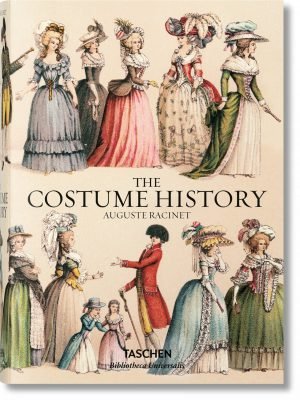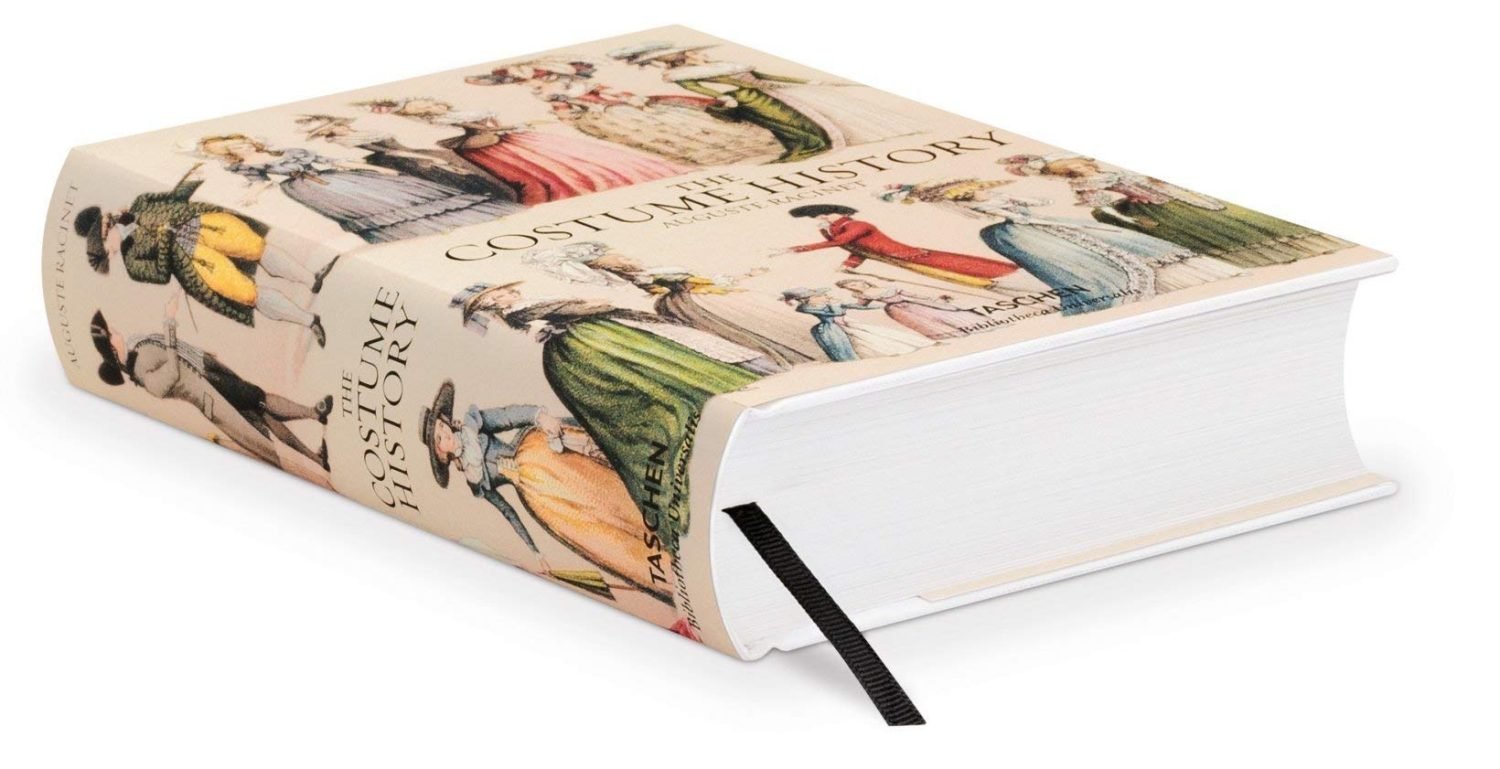
War costumes. France 12th, 13th and 14th centuries. Weapons from the 12th to 15th centuries.
No. 20. Knight of the end of the 12th century.
The type of armor, after the seal of Montmorency, belongs to the third and fourth crusades. Cylindrical helmet with smooth bottom, bronze nose protection, with acoustic,- visual- and breathing holes. Long chain mail shirt and a tunic open at the front reaching down to the ankles below.
Sword belt and spore strap with enamels. Legs and shoes also covered with ring mesh. The scabbard of the sword with bronze handle made of painted leather with bronze fittings. Wooden shield with bronze fittings and coat of arms on a strap running across the chest. The lance would be about 12 feet long, with smooth tip, without hand protection and counterweight.
No. 22 – Banner Lord, end of the 13th beginning of the 14th century epoch of Philip the Fair (Philip IV. French: Philippe le Bel, 1268 – 1314). This knight, depicted after the seal of the Hugues of Chatillon (Hugh I, Count of Blois 1198-1248), carries a pilgrim staff and bag as they were put on before leaving for the Holy Land.
According to the decision made in the Gisors camp in 1188, the red cross was the badge of the French, the white of the English, the green of the Burgundians. In the Hundred Years’ War the badges of the French and the English changed, white for the former and red for the latter.
The knight’s potted helmet (enclosed helmet) shows a similar arrangement of the visor to that of No 20. It was so heavy and uncomfortable that it was reserved for tournaments and parades and was content with the iron cap (cervelière), the cheek helmet (bacinet) or the iron hat (Chapeaux à Montauban ) (cf. Fig. 23).
The armour of this period initially consisted of the broigne or brogne, sewn onto leather or linen, sometimes covered with a cloth, plates, scales or rings (cf. No. 11). The plates were made of hammered iron; shoulder pieces, upper arm cover, elbow tiles, knee and leg splints. Gloves and footwear under leather scale armour.
Norman spores are replaced by wheel spores. The sleeveless armskirt, girded around the waist, is slit at the front, after 1300 also at the back and at the sides. The sword hangs on one side of the knight’s belt strapped from left to right and the dagger (miséricorde) on the other. The lance carries the square banner of the banner masters, who had to lead at least a troop of 50 men into the field. The triangular flag (pennon) was led by simple noblemen with a lesser entourage. The writers of the 12th and 13th centuries used the expressions gonfanon, gonfenon and bannière indiscriminately for the field mark of a baron’s crew.
The standard (étendard) consists of a large piece of fabric slit in the middle and ending in two points and is first intended to mark the place of the highest commander. Nevertheless, until the end of the 15th century, all of the military emblems mentioned here had a purely personal character, national and party emblems never appear on them; they only bear the coat of arms or the motto of the leader.
No. 23 – War armor at the time of Philip of Valois (1328 to 1350). (First part of the hundred-year war.) Montauban’s iron hat (Chapeau de Montauban) over a ring mesh hood under which a woolen cap was worn. Leg protectors and shoes made of iron plates, spikes riveted into the footwear. Shoulder and arm plates. The chest protected by scale armour, Halsberg and quilted jacket (haubergeon and hoqueton). The tunic girded in the hips is over it. At the belt sword and dagger, in the right the long lance without flag. The shield is the pavas, palevas or talevas in use since the defeat at Crécy 1346, covering the whole body and intended for the fight on foot. It shows the white cross on a red field (cf. No. 22).
No. 18 – Foot soldier (time of King John, Jean II le Bon, 1350-1364). At the beginning of the 14th century the infantryman came into his own. The mercenaries, called Sergents, brought a lot of new offensive weapons from abroad, the halberd (guisarme or hallebarde), the Danish battle axe, the throwing skewer (dard), the scythe (faussard, fauchard; faucil), the flaming pike (godendart, godendag). The smaller municipalities and cities were guided by these mercenaries in the organization of their civil defence.
The foot soldier shown here carries the sickle, the short sword and the knife. The body is dressed in a quilted jacket and above it in a chain mail shirt. The helmet shows the form of the salade with a Bavière as neck protection. Underneath is a hood, the continuation of which also covers the shoulders. On the scabbard hangs the small round shield, fist shield (rouelle or boce). The steel greaves are held by a leather strap. The leather gloves are reinforced by a metal plate.
No. 21 – Commander of the Paris City militia in red and blue mi-parti (same time).
Iron hat with a downcast rim serving as visor, underneath a purple hood. Brigantine of metal plates on leather and Braconnière, the plates of which are visible from the outside; sleeves of ring mesh with iron underarm cover and leather bead. Iron shoulder and knee tiles. Leather splints reinforced with iron bands. Blue-red overlay, tongue-shaped serrated according to the fashion of the time.
No 1, 2, 3, 10 and 12. 12th-century shields.
The painting of the shield is arbitrary until the middle of the 13th century, only at the beginning of the 14th century is it determined by the coat of arms.
No. 10. – Short sword of the same time.
No. 8. – Saddle of the same time.
No. 4. – Copper helmet. End of the 11th century.
No. 5. – Great helm or heaume, Pot helmet. Beginning of the 13th or end of the 12th century.
No. 13. – Bacinet of the 13th century.
No. 9 – Salade with neck guard. The salade seems to have been used first under Charles VII around 1440.
No. 7 – Large tournament helmet of the 14th century. The helmet ornament is broken off.
No. 6. – Old English helmet. This helmet came into use around 1460, this most perfect head protection with firm Halsberg keeps up into the time of Louis XIII.
Illustrations after photographs.
No. 18, 20, 21, 22, 23 and the corresponding details No. 11, 14, 15, 16, 17 from the collection of the Musée de l’Artillerie in Paris.
No. 1 from the portal of Notre-Dame in Chartres and No. 2, 3, 8, 10, 12 and 19 from miniatures borrowed from Willemin.
No. 4, 5, 6, 7, 9 and 13 from the Musée de l’Artillerie in Paris.
Cf. Notice sur les costumes de guerre du Musee d’artillerie (Paris, 1876). – Viollet-le-Duc, Dictionnaire raisonne du mobilier français: armes de guerre. – Quicherat, Histoire du costume en France. – Gustav Desjardins, Recherches sur les Drapeaux francais (Paris, 1874).
Source: History of the costume in chronological development by Auguste Racinet. Edited by Adolf Rosenberg. Editor: Firmin-Didot et cie. Paris, 1888.








